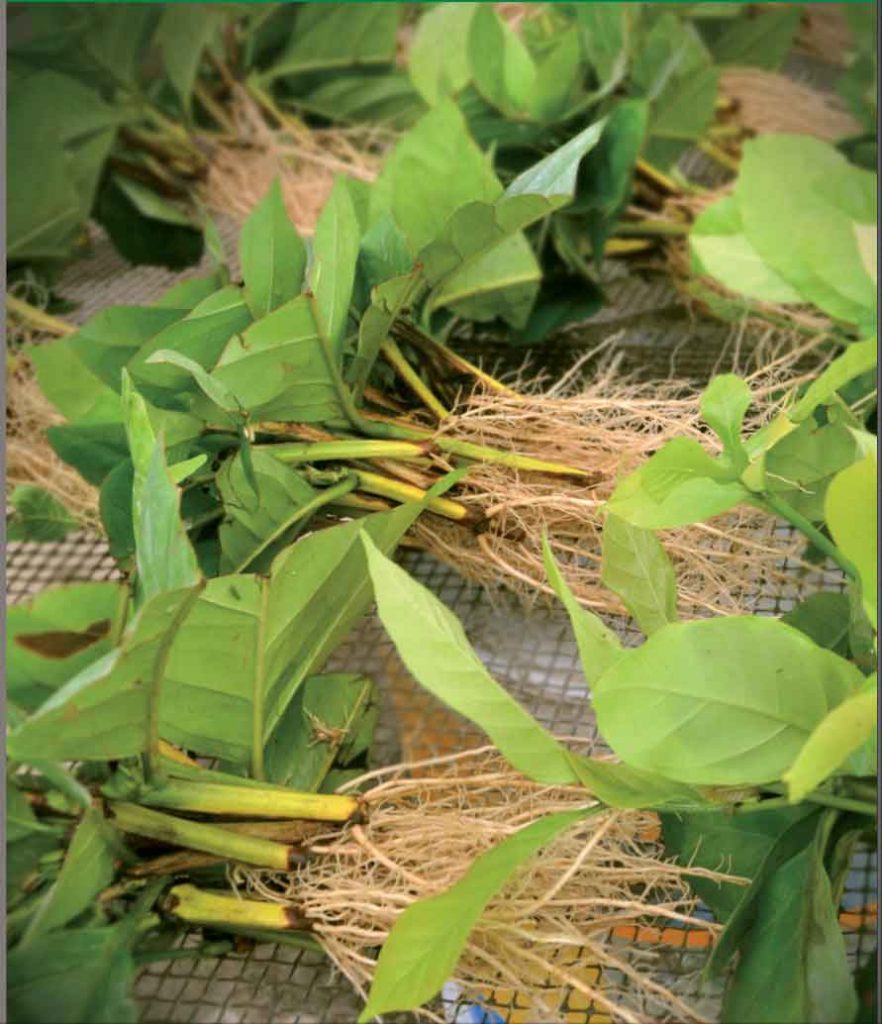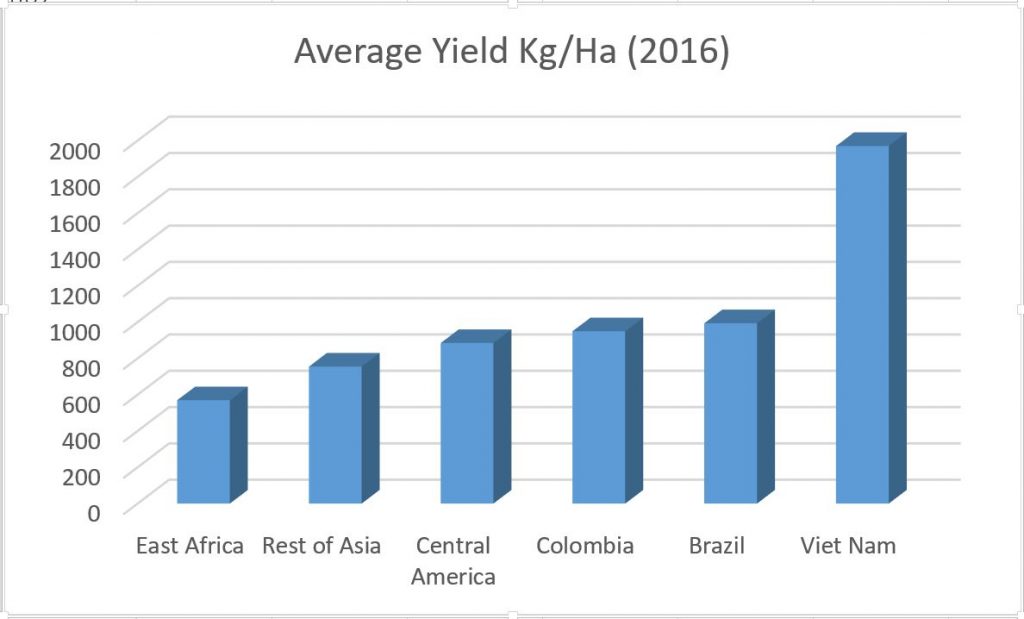Which is better Robusta or Arabica?
“Today, Arabica coffee is more popular than Robusta; but Arabica growing environment is being threatened by global warming and most farmers are not prepared to counteract the effects. Nevertheless, a warmer world would give Robusta the opportunity to lead the market in the near future.”
Its common knowledge by now, the world is warming up due to a steady and artificial buildup of CO2 in the atmosphere and it doesn’t seem to stop or slow down any time soon. Therefore, major cataclysmic event may be potentially unfolding in the near future. Despite the outcome, we should expect with certainty, the future global climate will be warmer than it is today.
SEE ALSO: Could coffee be a sustainable crop?
There are only two major coffee species currently trade commercially at a major global scale: Arabica and Canephora (Robusta)
Arabica is the leading coffee specie in the world today, representing 60% of the global market and growing in the tropics at elevations above 800 m.a.s.l.; Canephora however, represents only 39% of the market, but it’s highly productive, adaptable, capable of growing at low elevations and vastly disease resistant.
From the two, Arabica is definitely the most vulnerable to climate change, because it grows in a narrow environmental niche very likely to disappear or transition to higher elevations as temperature increases over time; at higher elevations Arabica would need to rival other local crops with higher priority due to their nutritional value. If global warming gets severe, it is imaginable farmers would need to choose growing crops depending on their nutritional value, where coffee has no significance whatsoever.
Apparently Robusta seems to be the perfect crop for a warmer future, it is adaptable, highly productive, disease resistant and can potentially grow almost anywhere. Nevertheless, it’s impossible not to wonder, if Robusta coffee is such ideal crop.
Why is it not leading the global market today?
Although, many people would argue, the reason is not associated with the poor Robusta beverage quality. In fact, Specialty coffee is a modern phenomenon, triggered by traceability, new processing techniques, quality control and highly skilled and motivated coffee farmers. Historically, coffee quality hasn’t been a priority and poor processing has always been the rule. Therefore, Arabica and Robusta coffee have been used interchangeably for decades by the coffee industry in blends and coffee products making them indistinguishable from one another quality-wise.
The real reason lies beyond the flavor or caffeine content, particularly it lies on some unremarkable features that make Robusta not such an ideal crop after all.
Shallow rooting system
Arabica, has a deep rooting system, sometimes even three times the tree size, allowing the tree to explore and exploit aquifers otherwise undetectable. It’s not uncommon to find Arabica trees in desert areas like Yemen and Harrar (Ethiopian, Somali region) growing healthy and productive with little to no rainfall. Robusta however has a shallow rooting system that makes the tree very susceptible to draught and mostly dependent on artificial irrigation during the dry season. Unsurprisingly, artificial irrigation is not very popular among smallholder coffee farmers who make less than $2 per day.
Reproduction
Arabica, is 85% to 95% self-pollinating autogamous plant; essentially, it means, every time a farmer uses coffee seeds to grow new trees, he could be 85% to 95% certain the new trees are going to be identical or clones to the parent trees. Robusta however is a 100% cross pollinating allogamous tree; meaning, seeds grown from parent trees are going to be completely new and unique individuals. This makes really hard for farmers to do proper crop selection by filtering or maintaining particular tree traits. To do so on Robusta, farmers most rely on growing new trees exclusively from tree tissue instead of seeds. A technique and skills only acquired through proper education and training very few smallholder coffee farmers have the chance to have or afford.

Nutrient Requirement
Globally, Arabica is predominantly grown by smallholder coffee farmers. These micro-scale farmers, due to economic reasons or insufficiency of commercial fertilizers at local markets, are characterized by the low nutrient inputs they provide to their crops. With proper shading, Arabica can survive and even deliver a small harvest in frugal conditions.

“The main reason we consume mostly Arabica coffee worldwide today, is because smallholder farmers can obtain a harvest (ouputs) in return for little to no inputs (fertilizers).”
Canephora however, is a nutrient intensive crop that must be fertilized diligently for trees to develop and survive. Only countries of origin for Canephora (E.g. Uganda, South Sudan and DRC) and countries where fertilizers are readily accessible can endure the vast Robusta’s nutritional requirements.
SEE ALSO: Are farmers ready for the 21st century challenge?
Canephora has also been extensively used to grant disease resistance to Arabica trees:
- By genetic hybridization, more than 75% percent of all commercial Arabica coffee tress in the world have some level of hybridization with Canephora.
- By crafting, a technique where Arabica tree roots are replace with Canephora’s tree roots at early stages of development; this technique provides nematode and parasite resistance to Arabica trees.
Although, trees resulting from these techniques would enjoy extra disease resistance, they would also experience Robusta’s weaknesses, by becoming water and nutrient sensitive as well.
Although, Robusta’s advantages and benefits are undeniable for the coffee industry. Everything indicates water security, lack of fertilizers and poverty will still remain an issue for future generations of coffee farmers as it is today; making it really difficult for Robusta to become a feasible substitute for Arabica at global scale as climate change unfolds.
The only realistic option to guarantee a sustainable coffee supply in a warmer future is still Arabica. A full scale solution doesn’t exist just yet. We would need a new generation of farmers and coffee varieties that could deal with the problem. So far we have neither, global Arabica tree populations are currently under stress due to leaf rust and coffee farmers endure generalized poverty; it would depend on us and how we support coffee producing nations to face the crisis that would finally determine the future of the whole coffee industry.
